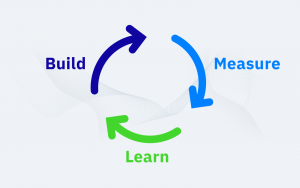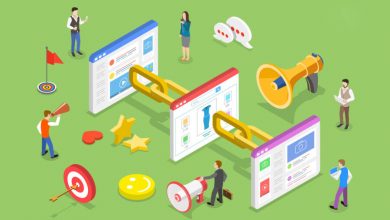
There are many developers who are more likely to jump to writing code directly. It was quite obvious as that is what they have been instructed for. They never realized the importance of designing.
But to make your software product flexible, scalable, and maintainable, it is significant to understand the importance of product design.
Product Design
It is the process of,
- Defining software methods
- Functionalities
- Objects
- Complete structure
- Fundamental interaction of your code
It will help with the resulting functionality to address your users’ demands.
It is all about defining each software element and its behavior before executing the actual software product. You need to adhere to design principles, which will guide you to build highly robust and customized software solutions.
Today’s companies worldwide use it as a framework for establishing how their products should look and feel. It’s called Agile design.
Agile Design
Agile design is a highly collaborative approach to designing and building new software products. It splits lengthy tasks into different groups of subtasks to be carried out in short “Sprints”.
These tasks are often reported back to the virtual team when informal scrum meetings are scheduled. It means the agile product design process is highly transparent across a cross-functional virtual team.

Teams flow in and out of each of these concepts throughout the software product design and development lifecycle. Each extends on the last to deliver value to end-users faster, without compromising quality or adding complexity to the process.
How to Make the Most of Agile Product Design?
1. Big Picture Thinking
Always keeping the big picture in mind is crucially significant to generate customer-oriented designs.
While focusing on performing incremental changes, the team usually forgets the overall goal. They forget about how to design a software product that would be fully functional, usable, and add more value for people. It leads to a shattered user experience.
So always note that users will not engage with different parts of your product. Rather they use the complete product to achieve their goals and also assess your product as a whole single software solution.
2. Iteration Zero
With an iteration zero, software product team members schedule a meeting to interact over the initial requirements and generate the idea of the future product.
Iteration zero is pretty crucial for UX designers as it allows them to do analysis, invite other team members (developers, stakeholders, etc) to discuss backlog and result of analysis, and create an effective software product strategy.
As a result, the team will have a mutual understanding of what they want to build and the concept of end-product. But it doesn’t mean that the decided concept should be followed rigidly. The division might change with time. The important thing is that the team has the mutual understanding to head in the right direction.
3. Fewer Team Changes
Every agile team has a culture generated by the shared enthusiasm and dynamics of each team member who is a part of it.
When it comes to making any change in a team, it will bother the internal operations and lead to lower performance. So try to avoid the situation where you need to shift or change team members.
There are many circumstances where it is necessary to hire new members to boost productivity, but the key focus should be on avoiding the scenarios that drive drastic changes in the team.
4. Hire a Scrum Master
Scrum is a process that revolves around individual sprint execution. Throughout the execution, the team aims to conclude certain work units which are usually user stories when it comes to UX.
While introducing the scrum process in front of a new team, it is crucial to have a dedicated scrum master who ensures flawless process performance.
The scrum master plays the role of coordinator for agile operations and boosts the chances that agile methodology is incorporated adequately into the team.
5. Build Prototypes
When you are following an agile product design approach, it is necessary to opt for interactive prototypes compared to status wireframes or mockups. It enables you to validate your idea and make sure it performs well.
When designers provide static designers to developers, there is a risk that developers will not get it correctly and code them differently. So it is needed to have a simple yet interactive design model compared to providing static design artifacts.
6. Hire designers with Coding Skills
Splitting up the designing from programming is speculative as not each concept generated by designers is achievable in terms of technicality. It is difficult to translate everything into code.
Designers with coding skills can assess a software solution from a design as well as a development viewpoint. So they are more likely to deliver technically viable products.
7. Documentation
It is recommended to not spend much time in preparing documentation of your entire software product features thoroughly as there would be many alterations occurring over time in the features.
Focus on documentation of any complex parts as the fundamental logic might not be acknowledged without documentation. There are chances that the development team can miss out on something important.
So to develop skills of how much to add to the documents, when to add, and why to add.
Agile Manifesto – Fundamental Principles
- Give utmost importance to gratifying and pleasing the customer through early and constant delivery of valuable software products.
- Be ready to accept changing demand even late in development.
- Frequently provide working software, whether after some days, weeks, or months.
- Constant attention to technical quality and better design improve agility.
- Businesses and developers must collaborate daily on the project.
- Develop projects by encouraging people, supporting their requirements, trusting their efforts, and providing them with a motivating environment to get the work done.
- Working software solutions is the key measure of progress.
- Note that face-to-face conversation is one of the most effective approaches to providing information.
- The best structures, demands, and designs evolve from self-organizing teams.
- At frequent cycles, a team explains how to be more productive, then adapts and changes its behavior based on that.
Summing Up
In today’s modern world, clinging to an iterative design approach can hold you back from being competitive in the ever-evolving market. It is time to opt for an agile design process that combines iterative as well as progressive approaches. It aids you to become highly productive and leads you in the proper direction.




